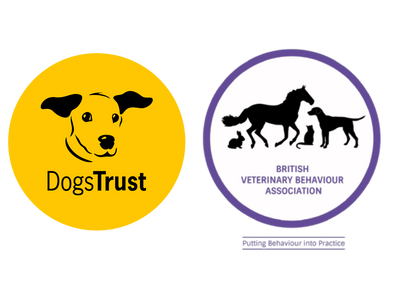Dog Friendly Vet Clinics
The Dog Friendly Clinic Scheme is a collaborative project between Dogs Trust and the British Veterinary Behaviour Association.

Aim of the scheme
The aim of the Dog Friendly Clinic Scheme, a collaboration between Dogs Trust and the British Veterinary Behaviour Association, is for veterinary professionals to apply dog behavioural principles to make the provision of veterinary care the most comfortable experience possible for dogs, owners, and veterinary teams alike.
Membership options
- Individual Membership: For UK-based veterinary surgeons, nurses, receptionists, and support staff (£35/year).
- Clinic Membership: For UK-based teams working together at the same site. The clinic appoints a Dog Friendly Advocate to complete the application process on behalf of their team who is then responsible for disseminating the materials and resources to all staff in their clinic. (£250/year).
How it works
- Learn: Complete a 4.5-hour online Application Course at your own pace within three months on our Campus platform.
- Assess: Pass a quiz and submit practical evidence for review.
- Payment: Make your membership payment and access exclusive benefits, including CPD courses, resources, and promotional materials.
Renewal
To continue representing the Dog Friendly Clinic community and accessing member benefits, renewal payments are due annually and the Application Course must be repeated every 3 years to maintain standards.
Join the Dog Friendly Clinic scheme
Start your journey today by visiting Dog Friendly Clinic Campus and signing up with the key: 4dLsphL2nh2x
Remember to keep note of your username, as you’ll need it each time you log in. If you’re registering on behalf of a clinic, be sure to choose a name that is clear and appropriate for your clinic.
If you don't want to join the scheme but would like to access some of our web pages, visit our Dog Friendly Clinic resources for some of our webpages containing the course content.
Need help?
If you have any questions regarding the scheme or your application, please contact our helpful Dog Friendly Clinic Team.
Disclaimer notice: The advice given on this website [in these materials] is intended for your general information only and should not be relied upon as specific advice for any veterinary practice or clinic. Each veterinary practice or clinic will be unique in its physical environment and each dog attending the veterinary practice or clinic will have specific needs and requirements, which the veterinary practice or clinic is solely responsible for. Unless prohibited by law, Dogs Trust and the British Veterinary Behaviour Association do not accept liability to any person veterinary practice or clinic relating to the use of this information.

